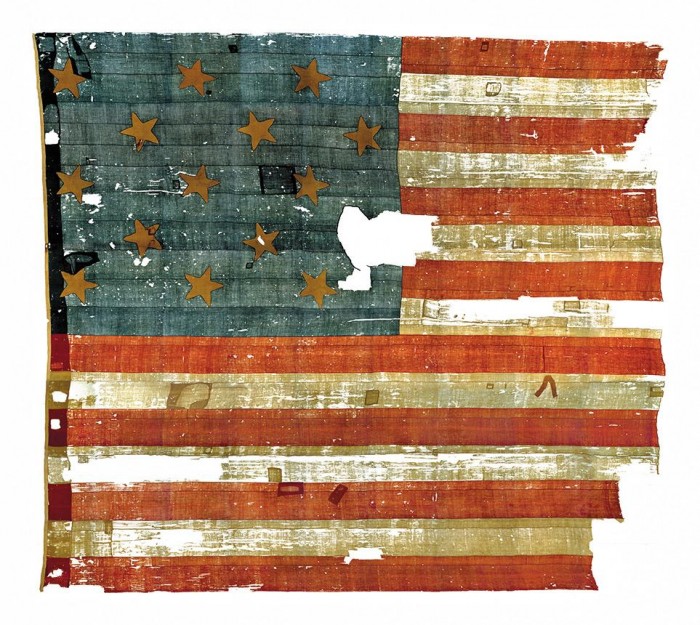The Smithsonian’s History of America in 101 Objects

Baltimore seamstress Mary Pickersgill made the giant flag that flew over Fort McHenry during the War of 1812, but Francis Scott Key made it famous, composing, on the morning of September 14, 1814, the lyrics that became the national anthem. Although Key’s words—some lifted from a poem he’d written in 1805—exalted American patriotism, they were set to a tune from the mother country: “To Anacreon in Heaven,” a popular English drinking song. (Photo by Hugh Talman, National Museum of American History)
Richard Kurin’s latest book, The Smithsonian’s History of America in 101 Objects, is a literary exhibition of objects from across the Smithsonian that together offer a new perspective on the history of the United States.
Ranging from the earliest years of the pre-Columbian continent to the digital age, and from the American Revolution to Vietnam, each entry pairs the fascinating history surrounding each object with the story of its creation or discovery and the place it has come to occupy in our national memory. Kurin, the Smithsonian’s Under Secretary for History, Art, and Culture, sheds new light on objects we think we know well, from Lincoln’s hat to Dorothy’s ruby slippers and Julia Child’s kitchen, including the often astonishing tales of how each made its way into the collections of the Smithsonian.
Other objects will be eye-opening new discoveries for many, but no less evocative of the most poignant and important moments of the American experience. Some objects, such as Harriet Tubman’s hymnal, Sitting Bull’s ledger, Cesar Chavez’s union jacket, and the Enola Gay bomber, tell difficult stories from our nation’s history, and inspired controversies when exhibited at the Smithsonian. Others, from George Washington’s sword to the space shuttle Discovery, celebrate the richness and vitality of the American spirit.
Kurin will be visiting Smithsonian Affiliates around the country to share stories from the book beginning with the National Museum of American Jewish History in Philadelphia. One of the unexpected selections in his book is a vial of Jonas Salk’s polio vaccine—which just happens to be on view at NMAJH in their Only In America gallery, on loan from the Smithsonian’s National Museum of American History.
Publishers Weekly called The Smithsonian’s History of America in 101 Objects a “humanistic approach to storytelling (he even includes digressions on things that didn’t make it in, like the ubiquitous stuffed animal named after the first President Roosevelt: the Teddy Bear) which makes for immersive, addictive reading.”
Click on the link if you’d interested in purchasing The Smithsonian’s History of America in 101 Objects. The employee discount applies for Smithsonian staff!
Check out Smithsonian.com for more on these iconic objects.
Posted: 1 November 2013
-
Categories:
Collaboration , Feature Stories , History and Culture , News & Announcements







